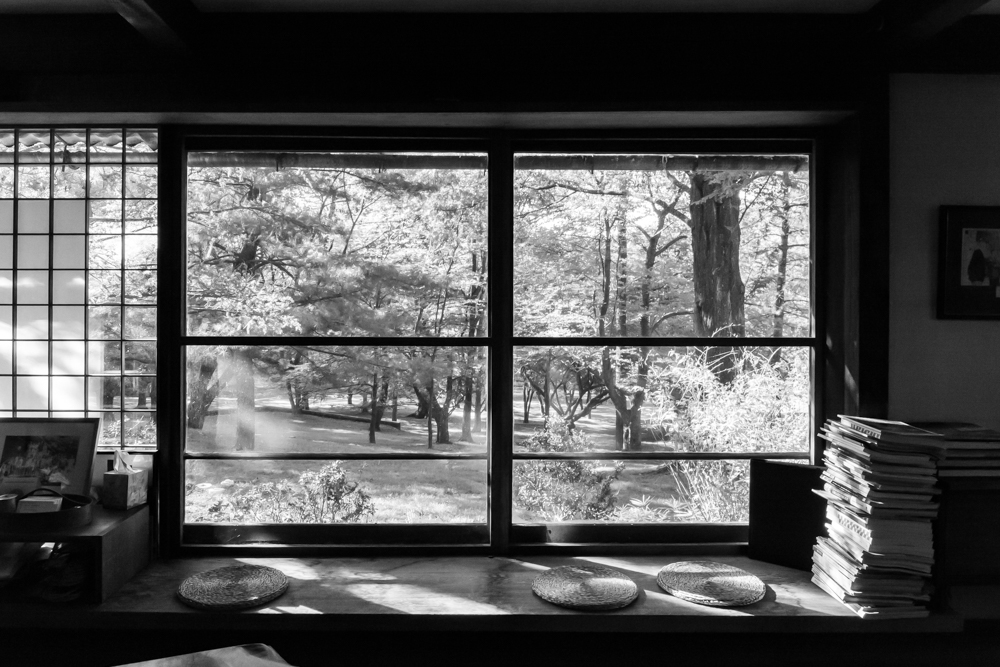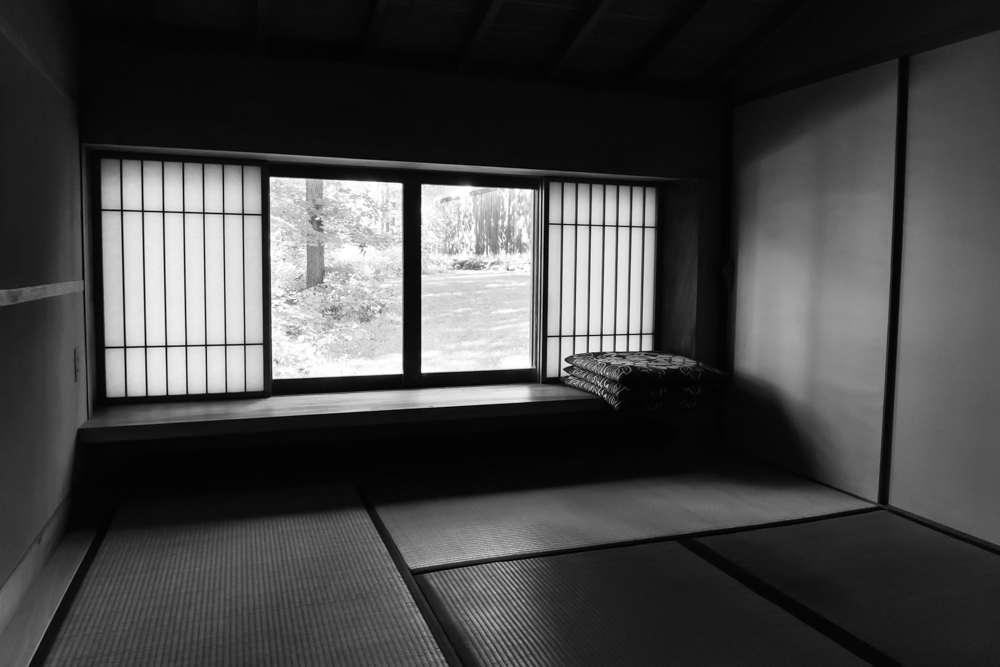Rikumo Book Club: Jun'ichirō Tanizaki's "In Praise of Shadows"
There was a specific moment during my job interview at Rikumo that told me the kind of company I was signing up to work with. After going over my work experience and availability, I was asked to name a work, artist, or movement that I had found inspiring or that had had a particular influence on my life. I don’t remember what I said at the time - I was fresh out of university and Japanese literature was as foreign to me as martian crop circles. I later found out, however, that there was one work ,in particular, that would get mentioned so much in interviews it became unofficial required reading for anyone interested in Japanese aesthetics.
In Praise of Shadows is an essay on Japanese aesthetics written by the author and novelist Jun'ichirō Tanizaki. Tanizaki was a major figure in Japanese modern literature, publishing books and novels that explored an inner search for cultural identity within a rapidly westernizing Japan. In Praise of Shadows, written in 1933, examines our relationship with darkness. It is a short but expansive read, covering topics as wide-ranging as architecture, lacquer tableware, kabuki actors, Albert Einstein, miso soup, rice, Japanese puppets, and aging. Though rambling at points, its guiding thread is the idea that shadows are an essential and influential part of Japanese aesthetics. Shadows, after all, convey the fragile beauty of feeble light. Far from cloaking their beauty, shadows turn the garish into dignified, the extravagant into refined. They offer moments of mystery and trance in everyday life. A simple shadow is an artform unto itself: its mere existence relies on invisible details that are either carefully thought out (the placement of windows, the depth of a crossbeam) or results of chance (the passage of time, the brightness of the sun). In Praise of Shadows asks us to consider how we, as a modern culture, became so eager to drown out shadows with light.
Tanizaki begins his essay with an anecdote about a time when he tried to build a house in the Japanese style. His initial excitement quickly ebbed to frustration as he realized how difficult it was to design an authentic Japanese ambiance with Western commodities like electric lights and central heating. Nothing looked right: traditional paper shoji screens could not protect against the glare of street lamps at night, ceramic floor tiles destroyed the beauty of a wooden Japanese-style bathroom, and “no stove worthy of the name will ever look right in a Japanese room.” There is an awkward tension present here, a possibility that western comforts are aesthetically incompatible with a Japanese lifestyle. It’s true that living well in the modern world requires certain comforts like heat and light. However, by becoming over-reliant on comfort (or what we society tells us is comfortable), we have forgotten something just as precious: the essential role that beauty plays in our everyday lives. Beauty is found in light but it is also found in darkness.
To Tanizaki, the loss of shadows is a sign that Western aesthetic ideals have become the new standard. In western environments, light is traditionally valued over darkness- you need only to think of the words “sun-lit” or “wide windows” splashed over a real estate listing to feel your pulse quicken with exhilaration. But Japanese culture thrives in the mystery afforded by shadows. Think of the refined Japanese arts like kabuki theater, shadow play, moon-viewing, and even tea ceremony. Unlike the bright stages of Western can-cans, these are activities best performed in the shadows.
Shadows allow Kabuki performers, who wear full faces of white makeup, to appear more expressive and dramatic. Their extravagant costumes take on a dignified patina when they are offset by dim light. Stage a performance in an auditorium with full light, however, and “the gaudy Kabuki colors... verge on a vulgarity of which one quickly tires.” Beyond the traditional arts, you need only look at a bowl of miso soup in full light and in low light to appreciate the difference shadows can make. When placed in the shadows, the swirling miso soup takes on a beautiful, rich depth... only to become unpleasantly cloudy under full light. In a world that exalts Western aesthetics as the universal standard, In Praise of Shadows offers a work of aesthetic activism. Its central argument forces us to consider what we lose when we favor certain types of beauty above others. Shadows, for all their bad reputation, do have a purpose. Think of the rooms you’ve been in that had no shadows- maybe a hospital room, or an office. Something about them feels strangely sterile. A work of art may look beautiful, but without shadows to define depth, it lacks reality. When we seek out the shadows not just as intrusions but as points of depth, we start becoming comfortable with mystery.
Perhaps Tanizaki’s objection is not with light exactly, but with a modern obsession to control nature for comfort. There is a memorable scene in Akira Kurosawa’s film Dreams where an unnamed man walks into a village, and after talking with a town elder learns that the village does not use electricity. “What about lights?” asks the man. “We have candles and linseed oil.” replies the elder. “But night is so dark!” insists the protagonist. “Yes,” shrugs the elder. “That’s what night is supposed to be. Why should night be as bright as day? I wouldn’t like nights so bright you couldn’t see the stars.”
To Tanizaki darkness is just mystery, less a problem to solve than a wonder to delight in. We don't need more light- we are already surrounded by all the beauty we need. When we accept the parts of nature that we find mysterious, we can live comfortably without want. The trick lies in the choosing what kind of comfort we favor. Light may offer safe passageway in the night road, but it obscures the stars in the night sky. Our eyes remain on the road, but they are blinded to the beauty of the natural world unfolding above us. What light gives us in practicality, it takes away from natural wonder. And, too often, we choose practicality.
--
“I have written all this because I have thought that there might still be somewhere, possibly in literature or the arts, where something could be saved. I would call back at least for literature this world of shadows we are losing.
In the mansion called literature I would have the eaves deep and the walls dark, I would push back into the shadows the things that come forward too quickly, I would strip away the useless decoration. I do not ask that this be done everywhere, but perhaps we may be allowed at least one mansion where we can turn off the electric lights and see what it is like without them.”
--
In Praise of Shadows is not a manifesto to go back into the dark. Tanizaki’s purpose here is not to make us hate the sun. He won't have us drawing the curtains and making caverns out of our homes. Rather, his essay is a tribute to the important role shadows have played in shaping Japanese culture. After all, there are no shoji doors without shadows; no kabuki theater, no lacquerware, no moon-viewing ceremonies, and certainly no art. In Praise of Shadows is not a work of criticism, then, but a work of gratitude and, at times, hope. After all, many of us at Rikumo continue to be inspired by his philosophy more than fifty years later. In exalting shadows, Tanizaki argues that an attitude of appreciation, pride, and mindfulness (especially mindfulness of beauty) is crucial for a well-lived life. That beauty can be found in dark places, so long as we make the effort to look past the light.
WORDS BY MAGALI ROMAN
PHOTOGRAPHY BY CHRIS SETTY






